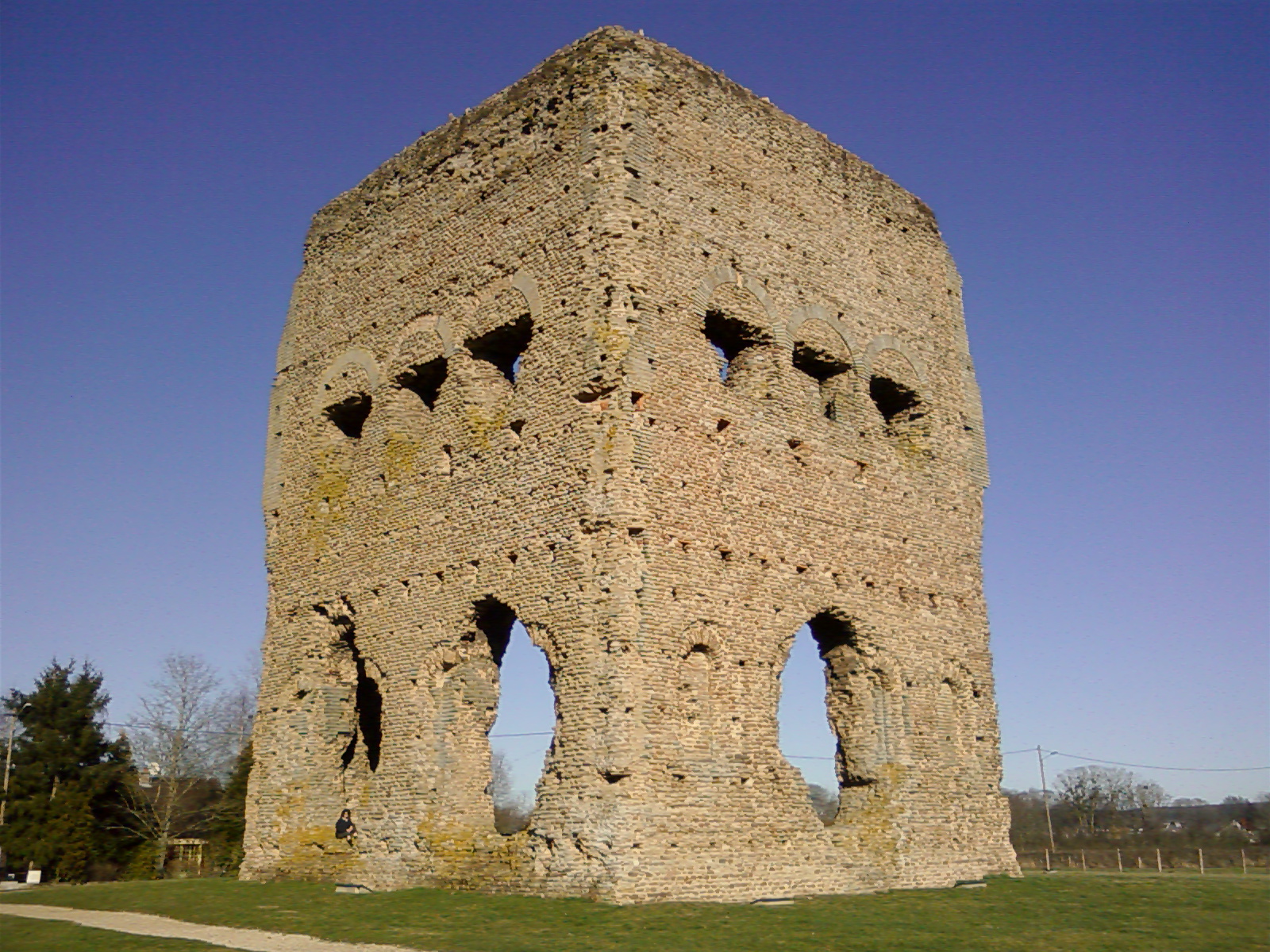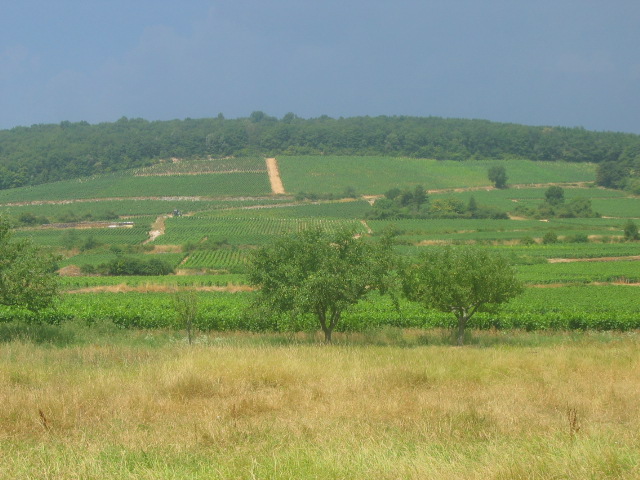|
Morvan
The Morvan (historically Morvand from the Latin ''Murvinnum'' 590)Pierre-Henri Billy, ''Dictionnaire des noms de lieux de la France'', éditions Errance, 640 pages, 2011 , is a mountainous massif lying just to the west of the Côte d'Or escarpment in the Bourgogne-Franche-Comté region, central-east France. It is a northerly extension of the Massif Central and is of Variscan age. It is composed of granites and basalts and formed a promontory extending northwards into the Jurassic sea. It is the smallest mountain area in France in terms of landmass covered, as well as the lowest, with a maximum altitude of 901 metres (2,956 feet) at Haut-Folin. Geography The Morvan is located across the Côte-d'Or, Nièvre, Saône-et-Loire and Yonne departments in the Bourgogne-Franche-Comté region in central-east France. At its heart nowadays is the protected area of Morvan Regional Natural Park (French: ''Parc naturel régional du Morvan''). Its main town is Château-Chinon, Nièvre o ... [...More Info...] [...Related Items...] OR: [Wikipedia] [Google] [Baidu] |
Morvan Regional Natural Park
Morvan Regional Natural Park (French: ''Parc naturel régional du Morvan'') is a protected area of woodlands, lakes and traditional farmland in the Bourgogne-Franche-Comté region of central France. It covers a total area of and extends through four different departments with the majority being in Nièvre. The area was officially designated as a regional natural park in 1970. The ''maison du parc'' (main visitors center) is located in the small commune of Saint-Brisson. It maintains one of the park's six natural history museums (''Écomusée de Morvan''). Member communes The park includes 117 communes as well as five associated partner communes. * Aisy-sous-Thil • Alligny-en-Morvan • Anost • Antully • Arleuf • Arnay-le-Duc • Asquins • Autun • Avallon * Bard-le-Régulier • Bazoches • Beauvilliers • Blanot • Blismes • Brassy • Brazey-en-Morvan • Bussières * Cervon • Chalaux • Champeau-en-Morvan • Chastellux-sur-Cure • Châte ... [...More Info...] [...Related Items...] OR: [Wikipedia] [Google] [Baidu] |
Autun
Autun () is a subprefecture of the Saône-et-Loire department in the Bourgogne-Franche-Comté region of central-eastern France. It was founded during the Principate era of the early Roman Empire by Emperor Augustus as Augustodunum to give a Roman capital to the Gallic people Aedui, who had Bibracte as their political centre. In Roman times the city may have been home to 30,000 to 100,000 people, according to different estimates. Nowadays, the commune has a population of about 15,000. Geography The commune lies in the northwest of the department. History Early history Augustodunum was founded during the reign of the first Roman emperor, Augustus, after whom it was named. It was the civitas "tribal capital" of the Aedui, Continental Celts who had been allies and "brothers" (') of Rome since before Julius Caesar's Gallic Wars. Augustodunum was a planned foundation replacing the original oppidum Bibracte, located some away. Several elements of Roman architecture such ... [...More Info...] [...Related Items...] OR: [Wikipedia] [Google] [Baidu] |
Château-Chinon (Ville)
Château-Chinon (Ville) () is a commune in the Nièvre department in France. It is a sub-prefecture of the department. The villages around the town are grouped in another commune named Château-Chinon (Campagne). François Mitterrand (1916–1996), President of France from 1981 to 1995, was the mayor of Château-Chinon from 1959 to 1981. It is (by car) southeast of Paris. annuaire-mairie.fr. Twin towns * , Italy * , Mali *[...More Info...] [...Related Items...] OR: [Wikipedia] [Google] [Baidu] |
Haut-Folin
Haut-Folin in the Saône-et-Loire department is at 901 m the highest point in the region of Burgundy in France. It is the summit of the Morvan mountain range. It forms part of the drainage divide between the Seine and Loire rivers. It is located in the commune of Saint-Prix. There is a 40 km of cross-country skiing ski resort A ski resort is a resort developed for skiing, snowboarding, and other winter sports. In Europe, most ski resorts are towns or villages in or adjacent to a ski area – a mountainous area with pistes (ski trails) and a ski lift system. In N .... File:HautFolinVuDuMontBeuvray.JPG, Haut folin view from Mont Beuvray File:Relais de télévision au sommet du Haut Folin (901 m).jpg, Television relay station Landforms of Saône-et-Loire Mountains of Bourgogne-Franche-Comté {{SaôneLoire-geo-stub ... [...More Info...] [...Related Items...] OR: [Wikipedia] [Google] [Baidu] |
Nièvre
Nièvre () is a department in the Bourgogne-Franche-Comté region, central-east France. Named after the river Nièvre, it had a population of 204,452 in 2019.Populations légales 2019: 58 Nièvre INSEE Its prefecture is . Covering an area 6,817 square kilometres (2,632 sq mi), Nièvre is landlocked between six other departments: Yonne to the north, to the east, [...More Info...] [...Related Items...] OR: [Wikipedia] [Google] [Baidu] |
Côte D'Or (escarpment)
The Côte d'Or is a limestone escarpment in Burgundy, France of the same name of the '' department'' which was formed around it. It stretches from Dijon in the north to the river Dheune to the south, overlooking the valley of the Saône to the east. The east-facing slope of the Côte d'Or is home to some of the greatest names of Burgundy wine, such as Gevrey-Chambertin, Clos de Vougeot, Meursault and Montrachet. The northern half, the Côte de Nuits, produces red wine almost exclusively. The Côte de Beaune, around Beaune in the south, produces a mix of white wine and red wine. The Route des Grands Crus (Route Nationale 74) runs along the foot of the ridge and is popular with tourists. Scientists have not yet conclusively determined what factors cause the few small parcels of land on the Côte d'Or to produce superlative wines. Hugh Johnson and Jancis Robinson, ''The World Atlas of Wine 7th ed.'' Octopus Publishing Group, 2013 p. 50. History The area was settled by the Celts ... [...More Info...] [...Related Items...] OR: [Wikipedia] [Google] [Baidu] |
Yonne
Yonne () is a department in the Bourgogne-Franche-Comté region in France. It is named after the river Yonne, which flows through it, in the country's north-central part. One of Bourgogne-Franche-Comté's eight constituent departments, it is located in its northwestern part, bordering Île-de-France. It was created in 1790 during the French Revolution. Its prefecture is Auxerre, with subprefectures in Avallon and Sens. Its INSEE and postcode number is 89. Yonne is Bourgogne-Franche-Comté's fourth-most populous department, with a population of 335,707 (2019).Populations légales 2019: 89 Yonne INSEE Its largest city is its prefecture Auxerre, with a population of about 35,000 within city limits and 68,000 in the urban area. History The first evidence of occupation in th ...[...More Info...] [...Related Items...] OR: [Wikipedia] [Google] [Baidu] |
Château-Chinon (Campagne)
Château-Chinon (Campagne), or Château-Chinon-Campagne (), is a commune in the Nièvre department in central France. This commune groups several villages (Précy, Les Mouilleferts, Planchotte, Le Pont-Charrot, Montbois) all around Château-Chinon. Demographics On 1 January 2019, the estimated population was 546. See also *Communes of the Nièvre department *Parc naturel régional du Morvan Morvan Regional Natural Park (French: ''Parc naturel régional du Morvan'') is a protected area of woodlands, lakes and traditional farmland in the Bourgogne-Franche-Comté region of central France. It covers a total area of and extends through f ... References Communes of Nièvre Nivernais {{Nièvre-geo-stub ... [...More Info...] [...Related Items...] OR: [Wikipedia] [Google] [Baidu] |
France
France (), officially the French Republic ( ), is a country primarily located in Western Europe. It also comprises of overseas regions and territories in the Americas and the Atlantic, Pacific and Indian Oceans. Its metropolitan area extends from the Rhine to the Atlantic Ocean and from the Mediterranean Sea to the English Channel and the North Sea; overseas territories include French Guiana in South America, Saint Pierre and Miquelon in the North Atlantic, the French West Indies, and many islands in Oceania and the Indian Ocean. Due to its several coastal territories, France has the largest exclusive economic zone in the world. France borders Belgium, Luxembourg, Germany, Switzerland, Monaco, Italy, Andorra, and Spain in continental Europe, as well as the Netherlands, Suriname, and Brazil in the Americas via its overseas territories in French Guiana and Saint Martin. Its eighteen integral regions (five of which are overseas) span a combined area of ... [...More Info...] [...Related Items...] OR: [Wikipedia] [Google] [Baidu] |
Massif
In geology, a massif ( or ) is a section of a planet's crust that is demarcated by faults or flexures. In the movement of the crust, a massif tends to retain its internal structure while being displaced as a whole. The term also refers to a group of mountains formed by such a structure. In mountaineering and climbing literature, a massif is frequently used to denote the main mass of an individual mountain. The massif is a smaller structural unit of the crust than a tectonic plate, and is considered the fourth-largest driving force in geomorphology. The word is taken from French (in which the word also means "massive"), where it is used to refer a large mountain mass or compact group of connected mountains forming an independent portion of a range. One of the most notable European examples of a massif is the Massif Central of the Auvergne region of France. The Face on Mars is an example of an extraterrestrial massif. Massifs may also form underwater, as with the Atlantis ... [...More Info...] [...Related Items...] OR: [Wikipedia] [Google] [Baidu] |
Departments Of France
In the administrative divisions of France, the department (french: département, ) is one of the three levels of government under the national level ("territorial collectivities"), between the administrative regions and the communes. Ninety-six departments are in metropolitan France, and five are overseas departments, which are also classified as overseas regions. Departments are further subdivided into 332 arrondissements, and these are divided into cantons. The last two levels of government have no autonomy; they are the basis of local organisation of police, fire departments and, sometimes, administration of elections. Each department is administered by an elected body called a departmental council ( ing. lur.. From 1800 to April 2015, these were called general councils ( ing. lur.. Each council has a president. Their main areas of responsibility include the management of a number of social and welfare allowances, of junior high school () buildings and technical ... [...More Info...] [...Related Items...] OR: [Wikipedia] [Google] [Baidu] |
Cantons Of France
The cantons of France are territorial subdivisions of the French Republic's departments and arrondissements. Apart from their role as organizational units in relation to certain aspects of the administration of public services and justice, the chief purpose of the cantons today is to serve as constituencies for the election of members of the representative assemblies established in each of France's territorial departments ( departmental councils, formerly general councils). For this reason, such elections were known in France as "cantonal elections", until 2015 when their name was changed to "departmental elections" to match the departmental councils' name. As of 2015, there were 2,054 cantons in France. Most of them group together a number of communes (the lowest administrative division of the French Republic), although larger communes may be included in more than one canton, since the cantons – in marked contrast to the communes, which have between more than two million i ... [...More Info...] [...Related Items...] OR: [Wikipedia] [Google] [Baidu] |




